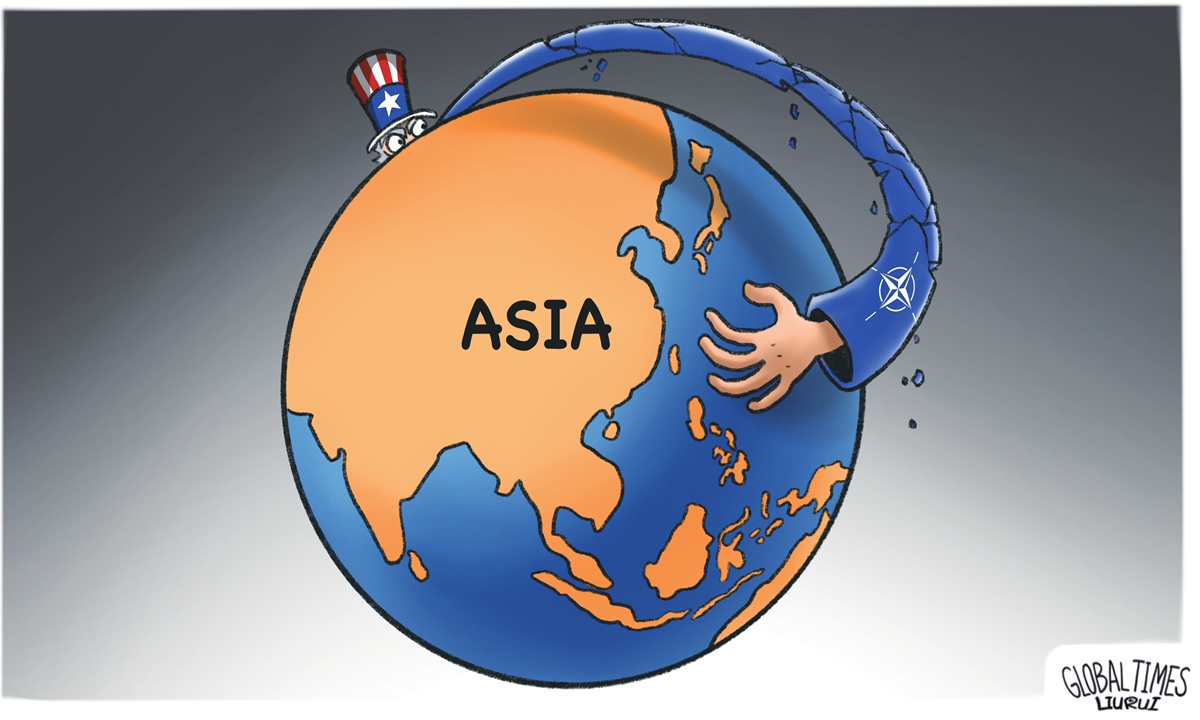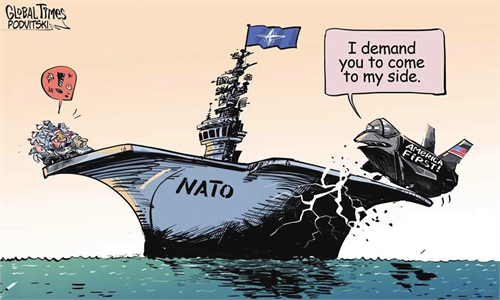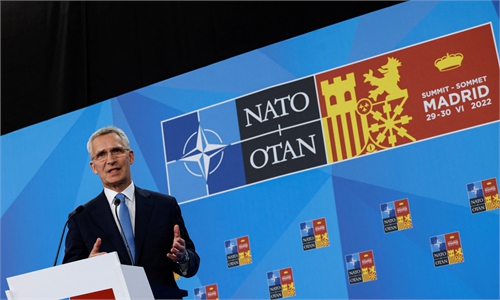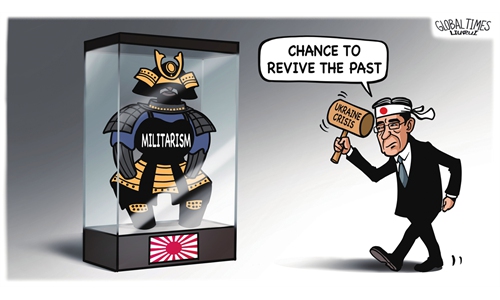
Illustration: Liu Rui/Global Times
The NATO summit in Madrid, Spain, has set the stage for an attempt to legitimize NATO's increasing penetration into the Indo-Pacific region as the opposition to the so-called "Russia-China alliance."
We are seeing a reversal in a way now, because after WWII, it was Asia that was unstable, and Europe stood as the bastion of stability. Now, it seems to be the other way round. It seems to me that the US warlords and warmongers are absolutely hell-bent on dividing the world and preaching about "democracies against autocracies."
So it's not only demanding the fealty of Europe, they're also trying to divide Latin America and Africa. And the announcement of AUKUS - the military deal between the US, the UK and Australia - kind of shook up ASEAN. How was ASEAN supposed to react to that? Because, in effect, AUKUS was displacing ASEAN as the central focus of the region. So I think that the strategy of the US hegemonists is a strategy of divide and rule across the different regions of the world, and I don't think that Asia is immune to this.
So how will NATO penetrate? In the first place, it will do so militarily with more military installations and more joint military exercises with different states in the region. All of this is aimed at establishing what they call "interoperability." That's consistency in terms of military operations with the US flying, for example, off British aircraft carriers.
Then they penetrate through military sales and military industrial projects, all of which is using not only AUKUS, but also the Quad - India, Japan, Australia, and the US. NATO, for some years, has had a series of partnerships for peace, which include Japan, South Korea, Mongolia, and Pakistan. Right now, or rather to coincide with the NATO summit, there are going to be the RIMPAC military exercises in Hawaii. Nearly half of the participants in that military exercise are NATO members or partners. In this way, NATO is becoming a Pacific force. Of course, Japan, Australian, New Zealand and India have all been invited to the NATO summit in Madrid in order to put a stamp on a strategic direction extending toward containing China.
The other thing we need to think about is that after all, we are in the era of hybrid warfare. Where there is resistance to actual militarization, there are a whole range of networks that are being created around the military core of AUKUS - networks on intelligence sharing like Five Eyes, research and development of new technologies, AI, quantum computing, cybersecurity, new supply chains, as well as buying into the whole narrative being spun by US intelligence on what is a threat and what is the correct response to any threat.
There are some analysts among the peace community in the United States, who talk about the military, industrial, congressional, intelligence, media, academia, think tank complex in the way that these networks are penetrating from the military industrial complex into the wider society, including politics, universities, the media and so on.
As to the effect, I think that countries will still continue to seek wiggle room, because the majority of countries really don't wish to make a choice between this fake "division of democracies vs autocracies." They want to keep good relations with all powers in the world. They will continue to seek wiggle room, because they are facing their own pressures, for example, from the pandemic, climate change, food shortages, inequality, and so on. Now it's a bit too late for the US to claw back its claims to world leadership.
The author is a UK-based senior lecturer in Asia-Pacific studies, peace and anti-war activist, and author of China's Global Strategy: Towards a Multipolar World. opinion@globaltimes.com.cn



